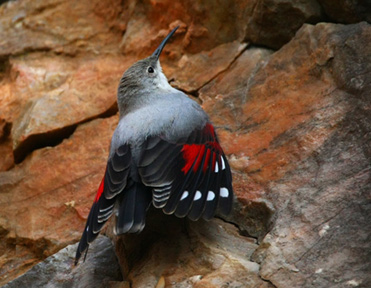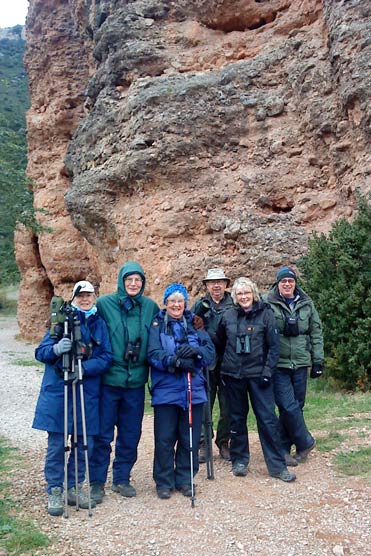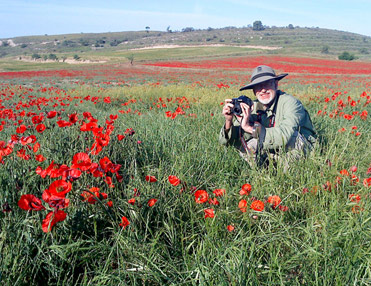Domestic birding.
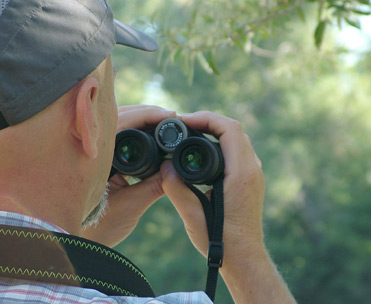
With the long, hot summer days and not a great deal of paid work on the near horizon a spot of evening birding has become something like an essential boredom survival technique. So round about 6pm, when the sun’s rays don’t bite into the flesh, I hop into the red Suzuki and drive to a birding spot as near as possible to Lleida.
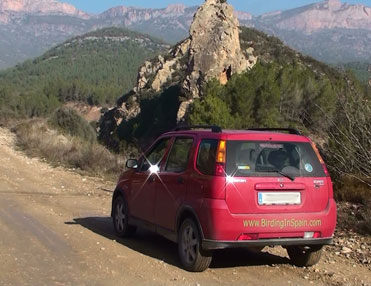
The trusty Red Suzuki
A few days ago I followed the river Segre’s course out of town, and watched a couple of very young Penduline Tits, all gape and contact calls, in some bulrushes opposite the sewage treatment plant. When mother flew over the river – maybe the grass was greener on the other side – her bewildered-looking offspring were hot on her heels, despite the obvious exertion required from such a small, virtually tailless and clueless young bird.
By that time joggers and cyclists were about in some number, so waders such as Green Sandpipers and Little Ringed Plovers were only at ease in the widest parts of the river with little stone or mud islands.
I eventually parked and took a walk around the Basses de Rufea, a few smallish tree- and reed-fringed ponds, and one of those places you felt could always deliver a surprise or two. I particularly have my sights set on the Tamarisk scrub flanking the eastern side of the pools, there’s just got to be a rare passerine turning up there sooner or later, as long as its watched. This I left to last.
A vaguely familiar bird call came from the small poplar plantation as I passed. I had to think about it for a moment or two before I placed the clear and repeated “kek-kek” as a juvenile Golden Oriole, a call which I hear much less than the familiar onomatopoeic “o-ri-ol” or the squealing “cat call”. I stood for a minute or two, lazily scanning the canopy in a vague hope of seeing the calling bird, which never happened. Oh well, que será será.
Some small details had changed since my last visit: where the old hide had been burnt down there was now a more sensible wooden screen with viewing slits at different heights. The emergent vegetation had emerged so much though that there was little of the open water to be seen, and fewer birds, ie none. It’s never an easy job trying to “manage” nature. A new path led me around the edge of this pond for the first time, and I found myself cutting across an unmarked trail to get to another viewing point, again with a new wooden screen.
Perhaps the greatest claim to fame of Rufea is what one can see from this spot: a large, disperse and often lively colony of herons and egrets dotted all over the trees growing on islands or right at the water’s edge. Abundant Cattle Egrets, numerous Little Egrets (although I had to look closer and more carefully than normal to separate these two species because of the large number of darker-billed and dark-legged juvenile Cattle Egrets), and several Night Herons, mostly juveniles, in view. A few Grey Herons here and there, all but one standing by the reeds and studying their reflections in the water. A single Squacco Heron flew over my head from behind me and landed out of view. Not too many years ago that would have raised eyebrows and the pulses of any Segrià county listers that there may have been. Lastly was another rare gem, although not seen, but unmistakably identified by its muffled barking call, a Little Bittern.
It was quite fun to see half a dozen Cattle Egrets riding sheepback among a tightly-packed flock of maybe two hundred sheep. Some rain fell from heavy clouds, and I picked out a large poplar for shelter. Its thick, slightly hollowed trunk lay at the ideal slant and even had a kink just above head height. I was quite looking forward to putting it to the rain test, but the rain stopped all too soon. I’ll have to remember that tree and go back and test it under better conditions.
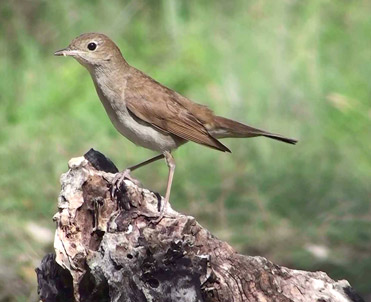
Nightingale. Didn’t see one.
And that was it really. I skirted around the Tamarisk bushes, getting bitten by a few insects, thinking that the dark clouds and the breeze wouldn’t give me the right combination to find my sought after rarity, and so it was. The only other birds I encountered were a couple of Reed Warblers and a scolding Cetti’s Warbler. And you ask: Was that because there were no unusual birds there at the time, or because you didn’t make any effort to find them?
That is something we’ll never know.

